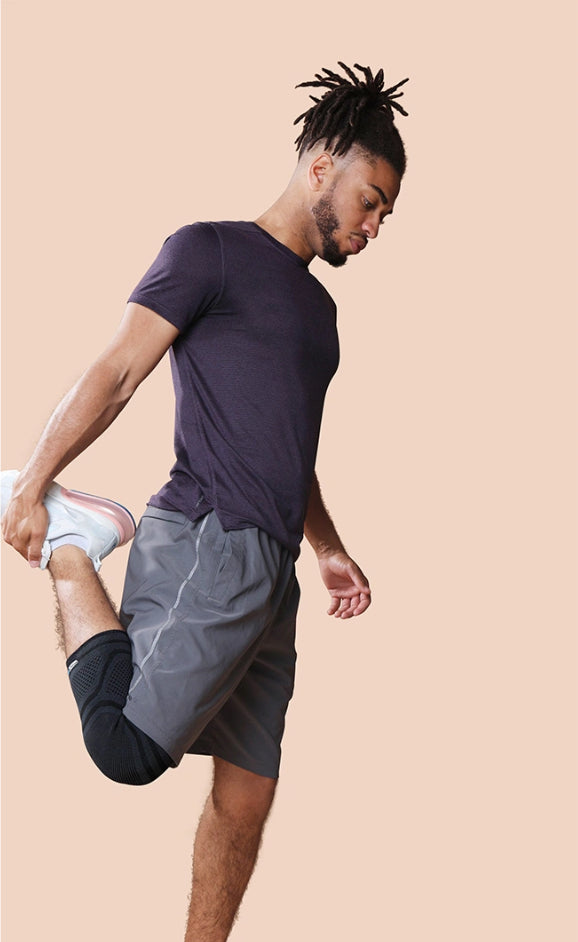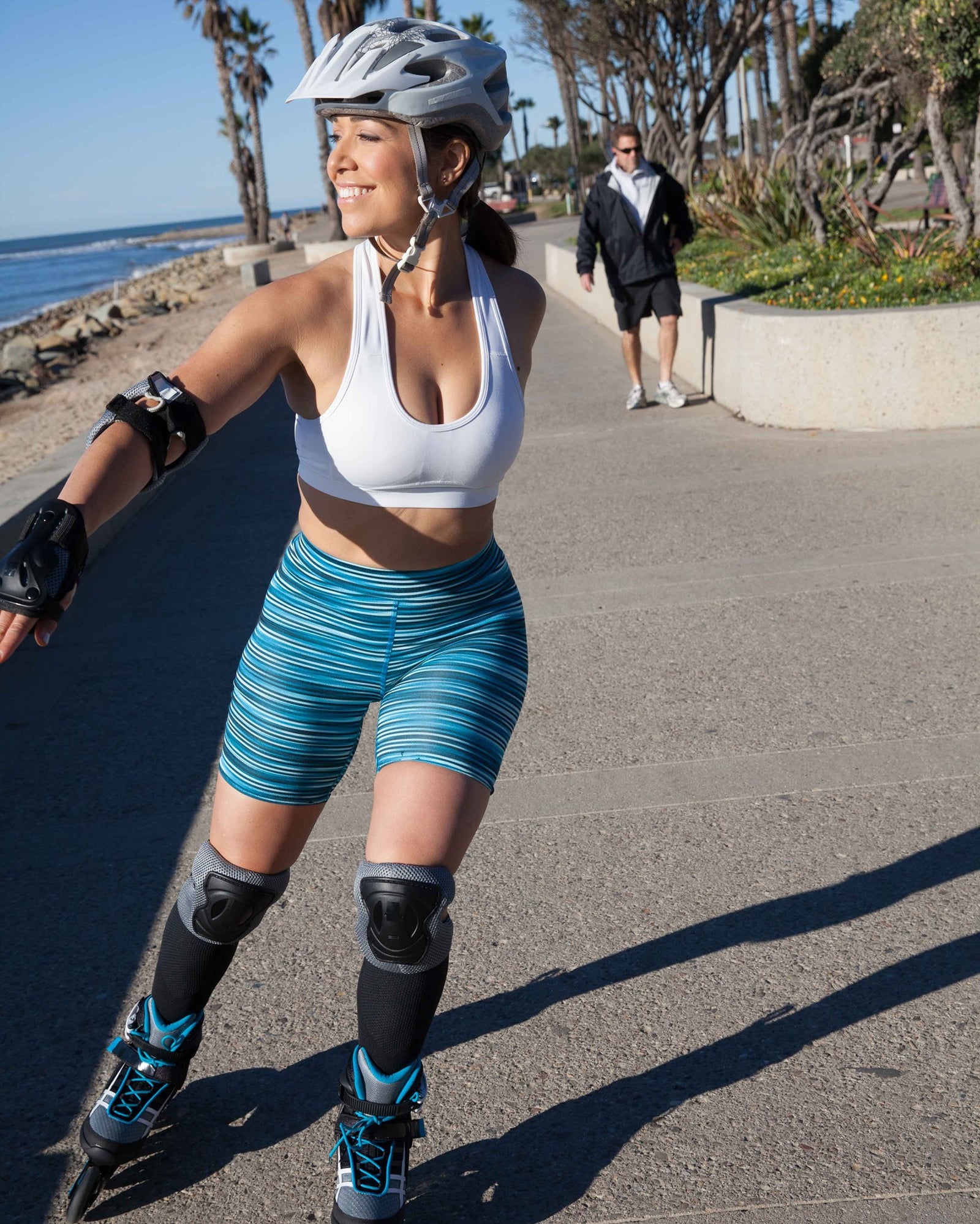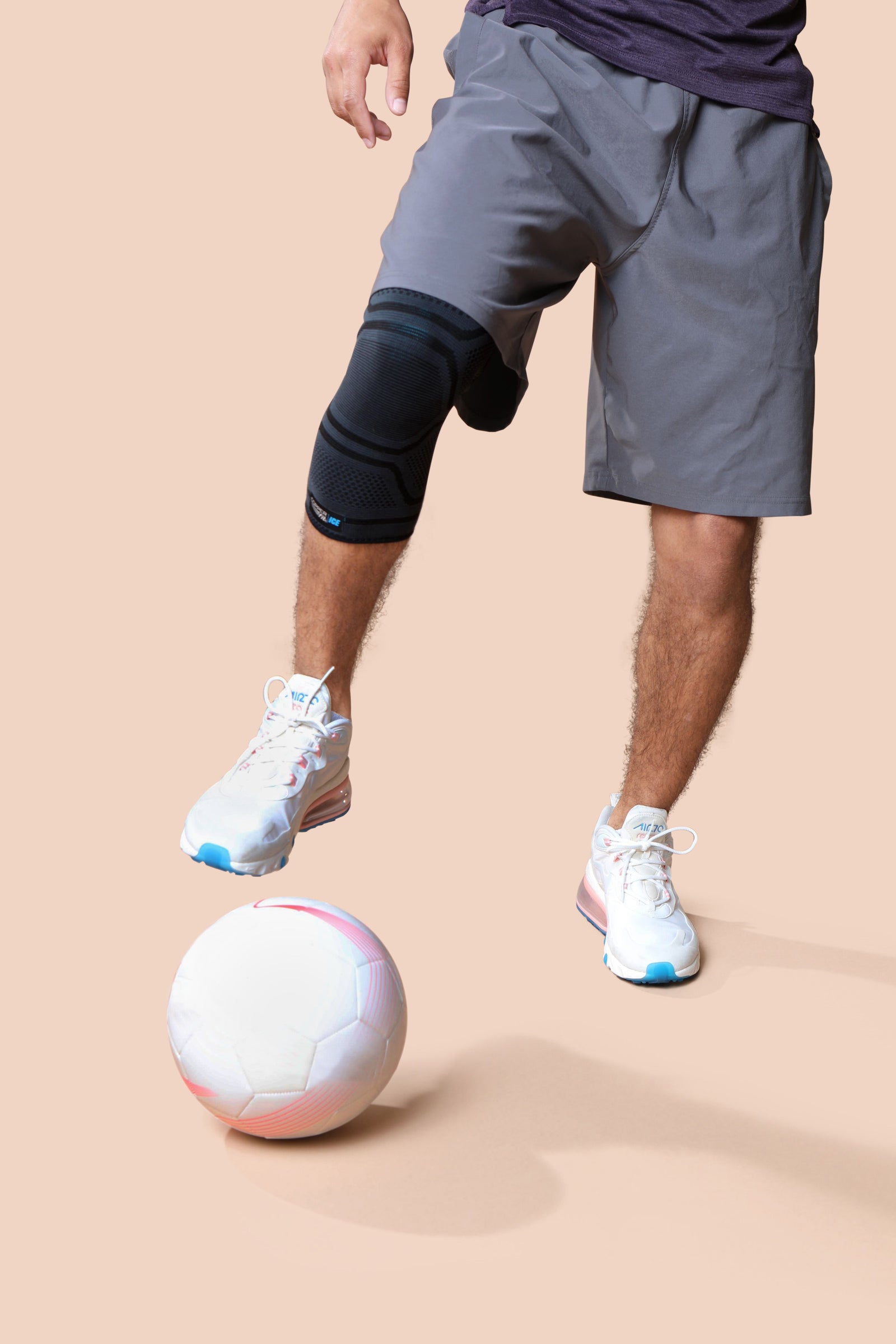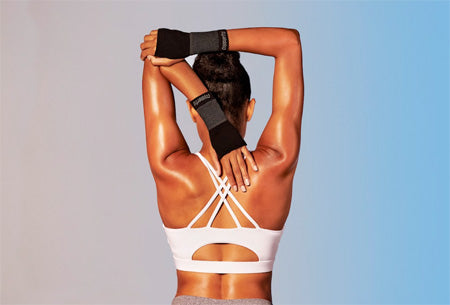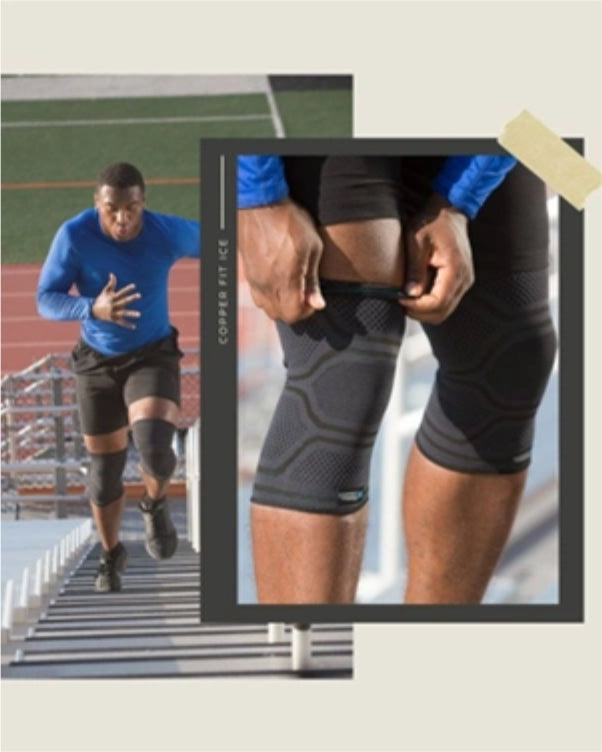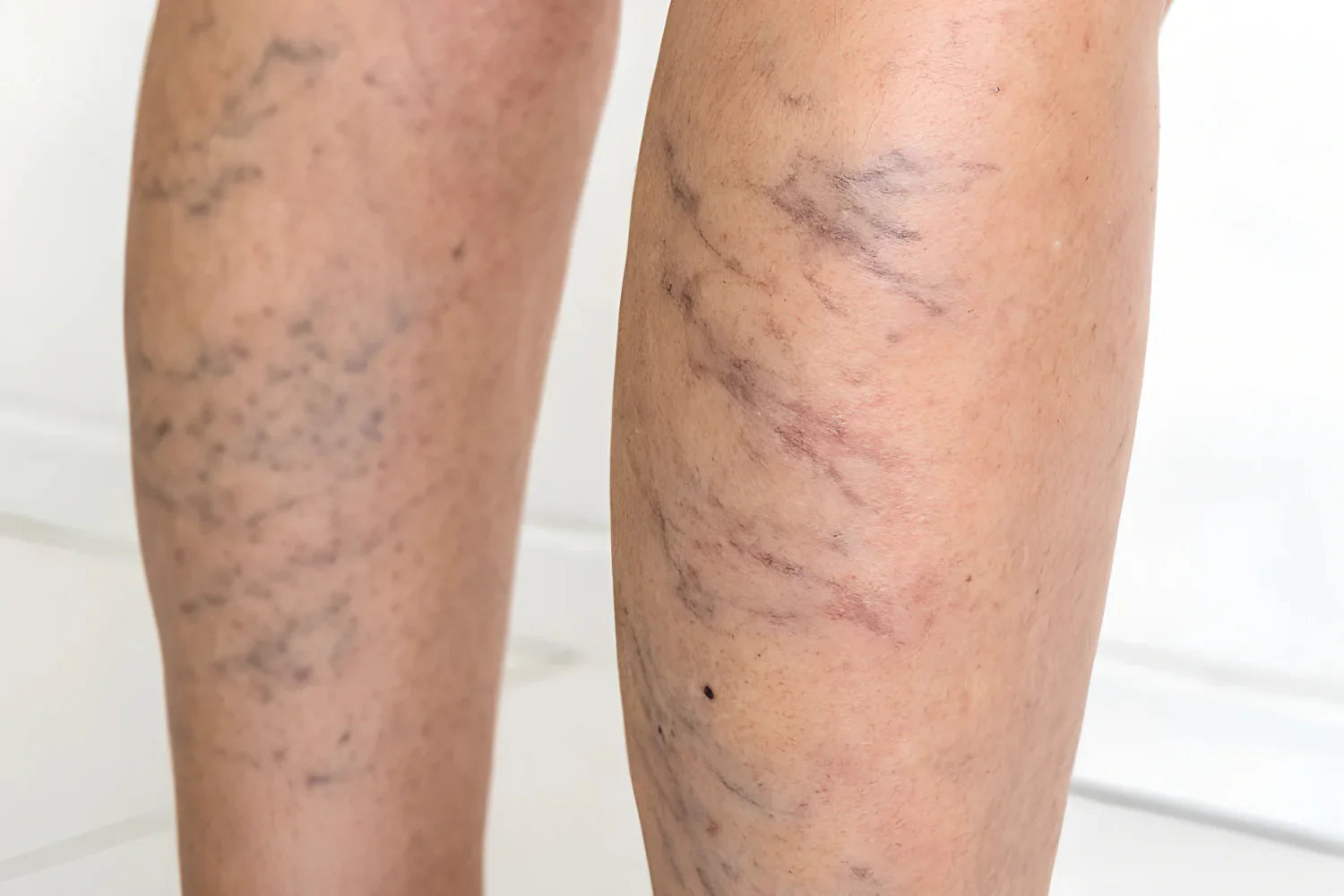
Key Takeaways:
-
Chronic venous insufficiency (CVI) occurs when leg veins struggle to return blood to the heart, leading to symptoms like heaviness, swelling, visible veins, and skin changes, especially after long periods of standing or sitting.
-
People experiencing persistent leg discomfort, swelling, or skin changes should see a healthcare provider for diagnosis and guidance. While CVI can often be managed with self-care, professional input is essential to rule out complications and determine the best approach.
-
Daily habits like wearing compression socks, elevating legs, staying active, eating circulation-friendly foods, and using proper footwear can make a big difference in managing CVI symptoms.
If you’ve ever dealt with heavy, aching legs after a long day or noticed swelling in your ankles that just doesn’t seem to go away, you might be dealing with more than just fatigue. These can be signs of something called chronic venous insufficiency (CVI).
While the name can sound intimidating, there are ways to manage it. With the right information and a few consistent self-care habits, you can support your body’s natural recovery processes and move through your day with more confidence and comfort.
This guide will walk you through what CVI is, how to recognize its signs, when to see a healthcare provider, and most importantly, how to support your legs with smart, effective self-care.
What Is Chronic Venous Insufficiency?
Chronic venous insufficiency happens when the veins in your legs have trouble sending blood back up to your heart. Instead of flowing upward the way it should, blood can begin to pool in the lower legs. This can lead to a feeling of heaviness or throbbing after standing or sitting for long stretches.
In healthy veins, small one-way valves help blood move in the right direction. With CVI, those valves may weaken or become damaged, making it harder for blood to circulate efficiently. Over time, this can lead to discomfort, swelling, and visible changes in the legs.
What Are the Risk Factors of CVI?
An estimated 1 in 50 adults experience CVI. CVI is more common in adults over the age of 50, people who sit or stand for long periods, those with a family history of vein issues, tobacco users, people with a history of leg injuries, or people who are pregnant.
That said, it can affect people of all ages and activity levels. Whether you’re on your feet all day for work or spend long hours at a desk, it’s worth paying attention to how your legs feel.
What Are the Symptoms of CVI?
CVI isn’t something most people identify right away. It often starts subtly, and symptoms can build gradually over time.
Here are some of the most common signs to look for:
- A heavy or aching sensation in your legs, especially at the end of the day
- Swelling in your lower legs or ankles that may improve with elevation
- Visible veins, including varicose or spider veins
- A feeling of tightness or cramping, especially after sitting or standing
- Skin changes on the legs or ankles, like dryness, darkening, or itchiness
- Tired, restless legs that feel uncomfortable at night
These symptoms can affect your day-to-day comfort and make recovery feel more challenging after exercise, travel, or long workdays. While it’s important to see a doctor to receive a diagnosis and rule out any potential urgent medical issues, the good news is that many people with CVI can manage their symptoms effectively through daily habits and supportive gear.
Let’s get into what you can do right now to help your legs feel better and stay active longer.
7 Self-Care Tips To Support Circulation
Even though CVI is something that requires medical oversight, daily self-care can make a huge difference in how your legs feel, especially when it comes to tension, soreness, and swelling. These tips are meant to support what your body is already working hard to do: move blood upward, reduce fluid buildup, and stay mobile.
1. Wear Compression Gear for Daily Support
Compression socks or sleeves are one of the most effective self-care tools for vein health. They help support healthy circulation by gently encouraging upward blood flow. That added support can make it easier to get through long work shifts, intense workouts, or cross-country flights without the heavy-leg feeling that often comes with poor circulation.
Look for compression levels that match your lifestyle and comfort level. Many people start with light-to-moderate compression for everyday use, and your doctor can help guide you toward what’s best for your needs.
2. Elevate Your Legs
Sometimes the simplest strategies are the most powerful. Elevating your legs for even 15 to 20 minutes a few times a day can help your body naturally reduce swelling and relieve tension.
Prop your legs up on a pillow while watching TV, reading, or scrolling on your phone. This small act gives gravity a chance to help move blood upward, taking pressure off your lower veins and supporting recovery.
3. Keep Your Body Moving
Movement encourages better circulation, plain and simple. It doesn’t have to be a full workout—just staying active throughout the day can help prevent blood from pooling in the legs.
Try gentle activities like:
- Calf raises while brushing your teeth
- Walking for five to 10 minutes every hour
- Stretching your legs at your desk
- Doing ankle circles during long meetings or flights
When your muscles move, they help push blood through your veins. That muscle activity can support your circulatory system and help ease daily discomfort.
4. Focus on Circulation-Supporting Foods
What you eat can play a subtle but important role in how your legs feel. A few simple shifts in your nutrition can help support vascular health and ease some of the fluid retention that contributes to swelling.
Helpful nutrition habits include:
- Eating antioxidant-rich fruits and vegetables (like berries, citrus, spinach, and peppers)
- Reducing sodium, which can help minimize water retention
- Staying hydrated to support lymphatic drainage
- Incorporating healthy fats, such as omega-3s from fish or flaxseed
These foods help give your body the nutrients it needs to support that process.
5. Support a Healthy Body Weight
Carrying extra weight can place added pressure on the veins in your lower body. If you’re working toward a weight that feels better for your joints and energy levels, even small, consistent steps can make a difference.
Think of this as one more way to support your mobility, not a number on a scale. Approaches like walking more often, adding more whole foods to your meals, and staying consistent with recovery practices can all help your legs feel lighter and more energized.
6. Stay Cool
Heat tends to make veins expand, which can lead to more pooling of blood in the lower legs. For many people managing CVI, hot weather, warm baths, or extended sun exposure can make leg discomfort feel more noticeable.
That doesn’t mean you have to avoid warmth altogether, but being aware of how temperature affects your legs can help you make smarter recovery choices. If your legs feel swollen or heavy after a long day, consider using a cool compress, cold pack, or cooling compression socks on your lower legs for short intervals.
Cold therapy can help soothe tension and offer noticeable relief when used as part of your recovery routine. Whether you’ve been working out, standing all day, or just need a break, a little cool-down session can go a long way in supporting your comfort.
7. Use Massage and Muscle Recovery Tools
When muscles are sore or tight, circulation can slow down, making the discomfort from CVI even more intense. Regular self-massage or use of recovery tools like foam rollers or deep-tissue massage guns can help promote muscle relaxation and support blood flow in the legs.
Gentle massage encourages movement in soft tissues and can help you feel more energized after long periods of stillness. You can start with just a few minutes of light pressure on the calves or thighs, avoiding any direct pressure on visible veins. Use slow, upward strokes to support circulation, and stop if anything feels uncomfortable.
If you use a massage tool, be mindful of how your legs respond. Muscle recovery should feel like a release, not a strain—so listen to your body and work within your comfort zone. Used consistently, this kind of recovery practice can be a powerful way to reset after long workdays, tough workouts, or travel.
FAQs
How long should I wear compression socks for venous insufficiency?
For most cases of venous insufficiency, compression socks should be worn throughout the day, starting in the morning and taken off before bed. They are typically not worn overnight unless specifically instructed by a doctor.
How often should I elevate my legs for venous insufficiency?
For optimal circulation benefits, elevate your legs for 15-30 minutes, several times a day.
Should I sleep with my legs elevated?
Yes, sleeping with your legs elevated can offer several health benefits, including improved circulation, reduced swelling, and relief from back pain. However, it's important to ensure proper support and consult with a healthcare provider if you have any underlying health conditions.
Supporting Recovery Is What We’re Built For
At Copper Fit, we know what it feels like when your body’s not moving the way it used to or when discomfort starts to get in the way of your goals. That’s why everything we make is built with recovery in mind.
Our products are designed to help soothe tension, support circulation, and promote muscle relaxation, so you can keep doing the things you love, without being held back by soreness or fatigue.
Whether you’re elevating your legs, staying consistent with movement, or reaching for compression gear that helps support healthy blood flow, every step matters. You don’t need to be perfect. You just need the right tools, a little patience, and a plan that fits your life.
We’re here to help you care for your body, build strength, and keep moving forward.
Sources:
Chronic Venous Insufficiency: Causes, Symptoms and Treatment | Cleveland Clinic
Compression Clothing and Circulation Benefits | UPMC HealthBeat

